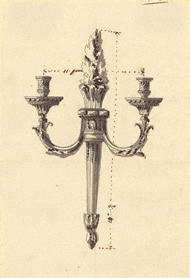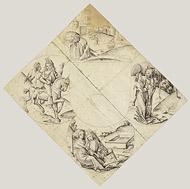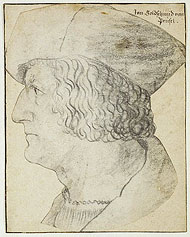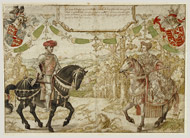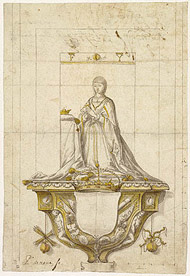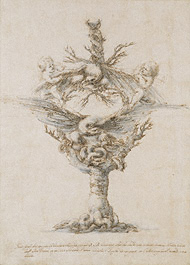| Education | ||
| Exhibitions | ||
| Explore Art | ||
| Research and Conservation | ||
| Bookstore | ||
| Games | ||
| About the J. Paul Getty Museum | ||
| Public Programs | ||
| Museum Home
|
February 6–May 20, 2007 at the Getty Center
This exhibition features designs for three-dimensional objects such as stained glass, metalwork, tapestry, sculpture, architecture, and the decorative arts. French Neoclassical artist Jean-Louis Prieur is believed to have made both this drawing for a three-branched wall light and the finished wall lights themselves. The back plate imitates a flaming torch, a motif appropriate to the object's function of holding candles. |
|||||||||||||
Stained Glass Several steps and a variety of craftsmen were involved in making stained glass. After an artist drew the overall composition, a glass painter painted the design onto pieces of clear and colored glass. |
|||||||||||||
Jewelry and Metalwork Portrait medals developed as an independent art form in the Renaissance. From 1518 to 1520, Hans Schwarz made more than a hundred preparatory drawings for portrait medals, including this one of Anton Rem, a wealthy citizen of Augsburg, Germany. Schwarz had a gift for capturing a sitter's unique physical characteristics in a simple profile bust. |
|||||||||||||
Tapestry This drawing is one of seven designs for a set of tapestries, now lost, depicting the genealogy of the house of Orange-Nassau, a branch of the Dutch royal family. |
|||||||||||||
Sculpture and Architecture Queen Isabella of Spain kneels before an altar in this study for a wood sculpture that still stands in the main chapel of the cathedral in Granada, Spain. The lower right and bottom right edges are marked for scale in varas, an old Spanish unit of measure equal to 33 inches. |
|||||||||||||
Table Ornament Elaborate glass table ornaments were common at the Medici court in Florence. This drawing's complexity, however, suggests that a cup constructed to its fantastic design never graced the tabletop at a Medici feast. Instead, it is a striking example of artistic ingenuity. |
|||||||||||||
